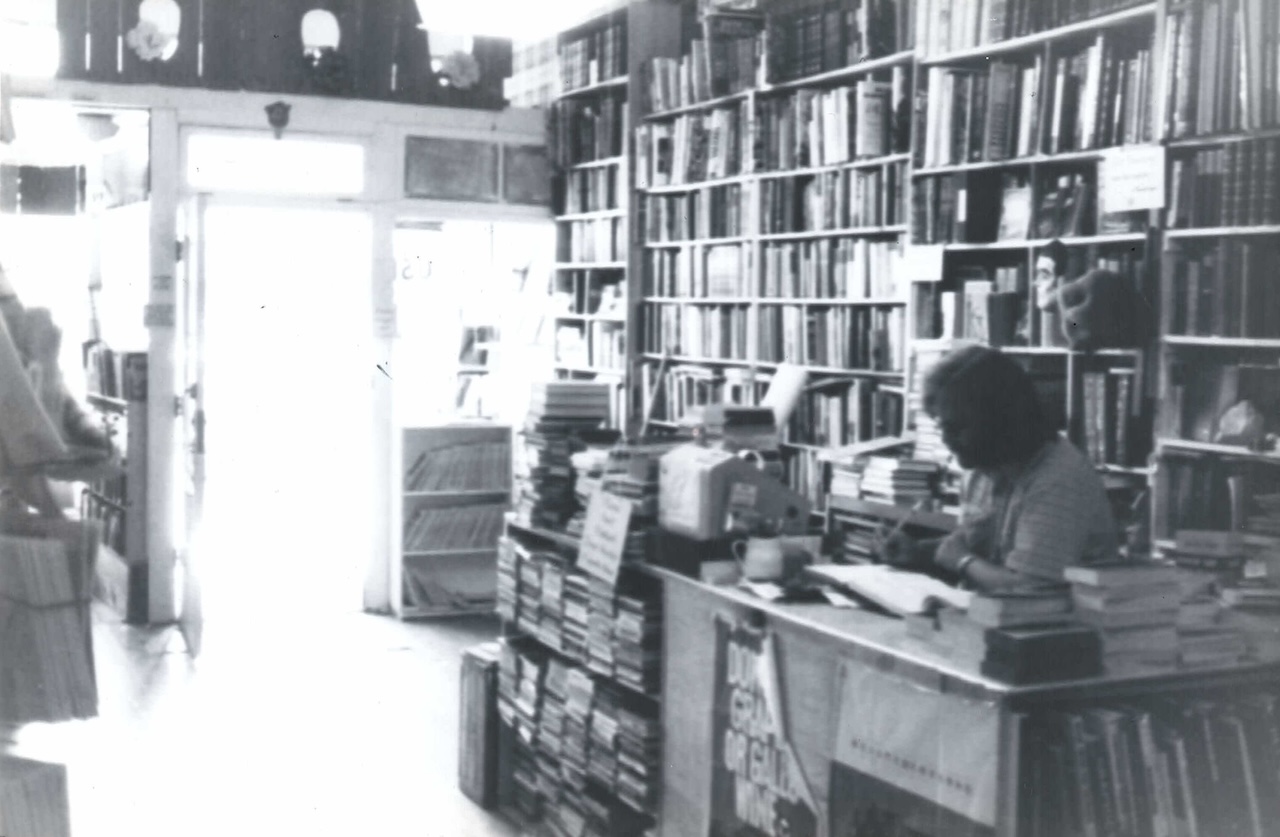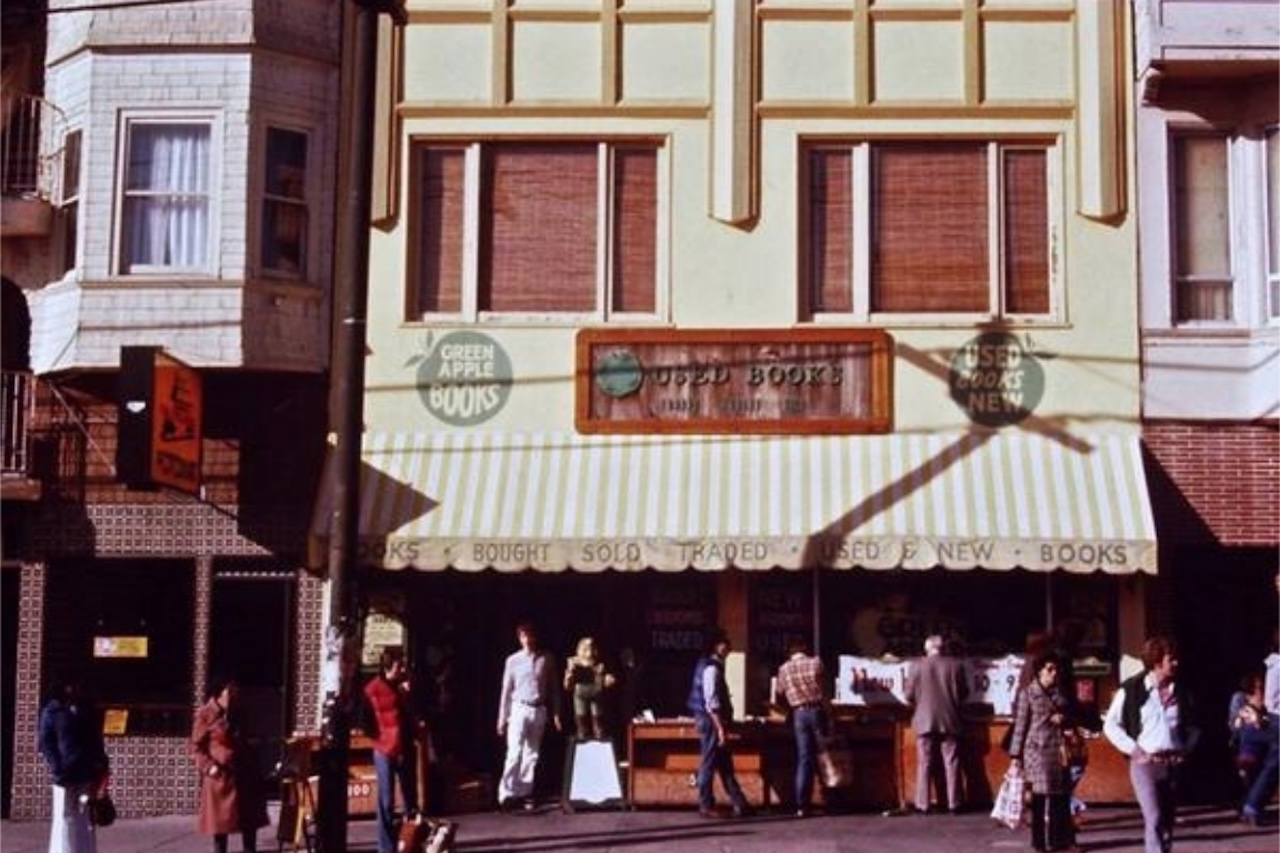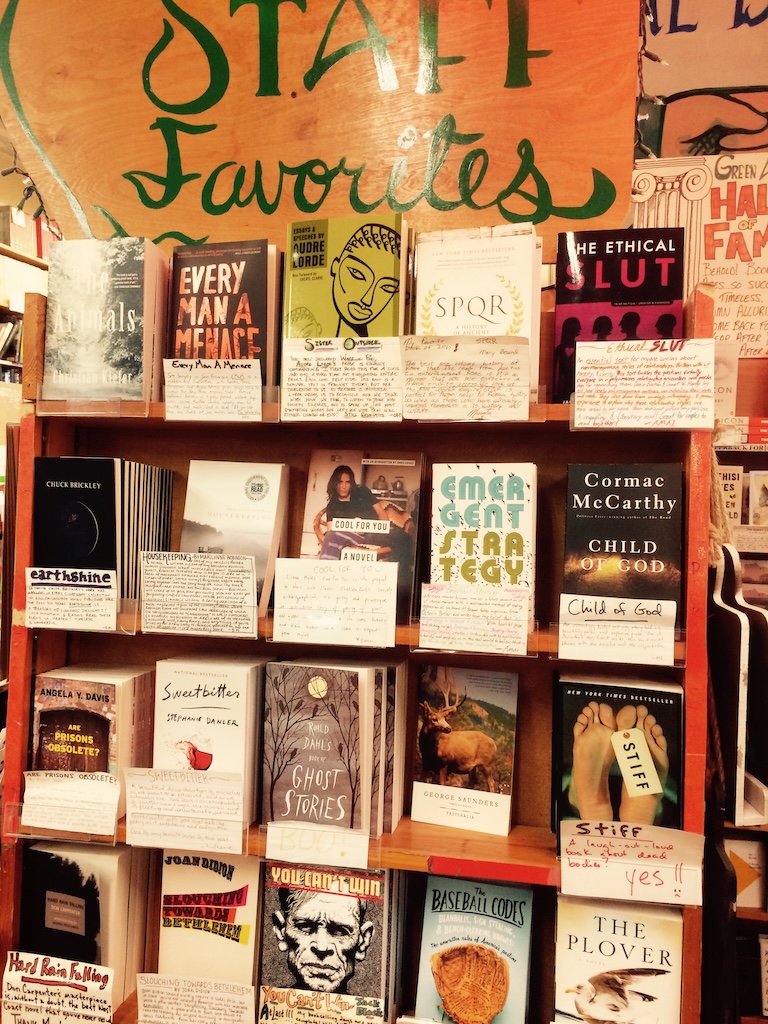Table of contents
In 1993, fresh out of college, I took a temp job at Green Apple Books. Even then, the store was a San Francisco institution. It had been around since 1967 and beloved by readers of all ilk, a cavernous maze of new and used books sprawling over three floors.
That temp role led to a full-time position. Several years later, the owner invited me and two of my colleagues to buy the store. A 10-year owner-financed plan let us do just that. And today, I run Green Apple Books with my co-owner, Kevin Ryan. We have three independent bookstores in San Francisco, plus a new outpost in San Francisco International airport.
One question I get all the time is, “How has Green Apple survived when so many independent bookstores have closed?”
I get it. I’ve been hearing it since the 1990s, when chain superstores, not online behemoths, posed a big threat. But I have to admit, I have dwelled on the puzzle for decades, and I still think about it a lot. And I’ve spent decades wrangling costs, evolving our product selection, adapting to changing marketing opportunities, and making the business as efficient as possible.


The unique financial complexities of bookselling
Unlike most other businesses, bookstores have more or less no control over either the costs of our products or the prices we can charge.
Let’s start with the costs. When our team wants to stock a new book, we can’t go to different vendors to compare prices. Only one publisher makes that book. The cost is the cost; we can’t negotiate a better deal, even if I order a bunch of copies at once.
At the same time, it’s important for us to pay competitive wages and help provide health insurance and generous paid time off to our staff. It’s not just the right thing to do, it helps retain our unionized workers, whom our customers rely on for their knowledge and taste.
But here’s where things get tricky for bookstores. When the cafe down the street sees its employee expenses (or any other costs) go up, it can raise its prices. Our team can’t do the same. We don’t set the retail price of a book. The publisher does, printing it right on the jacket.
Without any flexibility on costs or prices, bookstore owners need to hunt for even the smallest efficiencies. Fortunately, that’s how my brain works. I say I’m an administrative and operations person; my wife just calls me “the flinty Yankee.”
Embrace technology
Technology has transformed our operations at Green Apple Books. When I started, we entered sales data by hand into a ledger. Today, I can run real-time reports from my phone.
Credit-card processing has become cheaper, too. I used to switch providers frequently to get the best price. But I’ve stayed with Square for years, and not simply for the savings. It integrates so much in one platform — sales records, inventory, scheduling, email marketing, and more. In fact, Square does more than I need, but I get to just choose and pay for the tools that help power my particular business.
Using technology to tighten our operations has made a big impact on our business, particularly at the pop-up bookstore we operate inside a San Francisco bakery downtown. Without our current setup, I would have to drive 30 minutes both ways every week to manage inventory. Now I log in to my phone to check sales and adjust stock. It takes about 15 minutes.
We’ve also improved our website to better represent our store and offer a smooth customer experience. Our online sales are far higher today than they were before the pandemic, allowing us to sell books to customers near and far, for in-store pickup or shipping.
Sell more of what’s selling
At Green Apple Books, one of our mantras is Sell more of what’s selling. But you need the right data tools to boost sales and optimize inventory.
Before we had those tools, we put tags in our books so we could manually check how long they had been on the shelves. That’s no way to get the right product mix. What’s selling always changes.
We didn’t sell romance novels until a couple years ago, for instance. The decision not to offer these books wasn’t snooty on our part, we just didn’t have demand. We’d be crazy not to sell romance now, because it’s what a lot of people are reading. Once we realized there was demand, we added a romance bookcase.
The corollary is “bad books hide good books,” so we regularly purge our stores of slow titles, trimming sections as tastes change to make room for topics and genres that are on the rise.
To sell more of what’s selling, you need to run tests. For example, if romance novels really start selling, we might devote a second bookcase to that category and see whether sales keep rising. Maybe by a third case, sales stop going up, so we can determine that two cases are best. We constantly experiment with inventory this way, and we base our decision-making on data from the point-of-sale system, and by talking and listening to customers, of course!
Real-time data allows us to have the right inventory on hand and respond to customers’ desires. These efficiencies help our bottom line, but they also let us serve our community better.


Drive sales through community outreach
When you’re up against massive online and chain retailers, it’s easy to focus on all your disadvantages. But you have to embrace what sets you apart. For Green Apple Books, our close-knit community is a key differentiator.
A group of MBA students working on their keystone project evaluated our business and didn’t understand that point at first. When they approached us for a case study, they said they could see no economic rationale for why we were still in business. Again, I get it. But they spent a whole semester investigating. They researched the book industry and spent dozens of hours interviewing people in our store and around the neighborhood. They “discovered” that people come to Green Apple for community and for discovery. They come for the beauty of the space, and they come out of loyalty, as if it’s their duty to keep funky indie stores alive.
Customers value Green Apple Books as a “third place” — a gathering spot beyond home and work where they find connections. And they love finding their next favorite read based on a recommendation from a staff member, or even by stumbling upon a book through serendipity.
Indeed, if you ask readers where they intend to buy their next book, they’ll tell you at an independent bookstore — but if you ask them where they bought their last book, it won’t be at an independent bookstore. It takes work to stay in front of your community and earn their business.
That’s why we host author events several days each week, often featuring local writers and topics that speak straight to our customers. We’re plugged in with the local surfing, swimming, and rowing communities, so those sorts of books and authors are in regular rotation, as do poets and fiction writers and activists. Author events create memorable customer experiences and drive sales.
Technology has helped us bring in customers, too. Now we easily connect with them through email, which means better event turnout and higher sales. If a customer leaves a review, I immediately get an alert and respond. And if a customer disputes a credit card charge, I handle the matter right away online. With our old providers, resolving a customer dispute meant calling an 800 number and waiting on hold. It all adds up to a better experience for the customer, which increases the chances of repeat business.
Green Apple has also nurtured the “shop local” movement. Through the years we’ve highlighted the fact that two-thirds of the money you spend at local stores remains in the community. When you buy from national chains, less than half stays local. And when you buy from an online giant? Almost none of the money stays home. So about a decade ago, we helped start Independent Bookstore Day. It’s a big source of pride — what began as a California event has expanded to include more than 1,300 booksellers across the country. That Saturday at the end of each April is a ton of fun, and it’s also one of our biggest sales days of the year.
Defying the odds
I used to tell my wife, “This bookstore thing is great, but it can’t last forever.” During COVID, I thought I was finally right. But I finally have a different view (yeah, yeah – she’s right again). Don’t get me wrong, independent bookstores face serious challenges. But by finding efficiencies, leveraging technology, and engaging with our community, we thrive.
![]()











